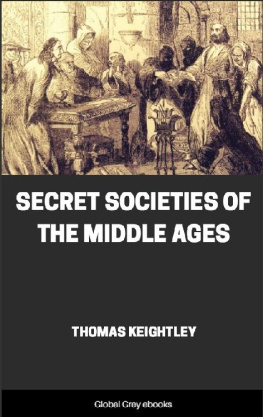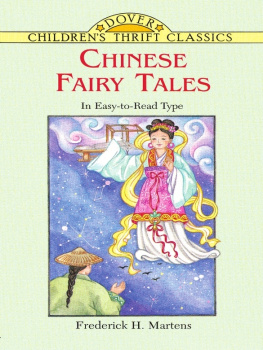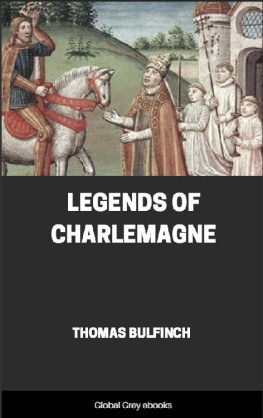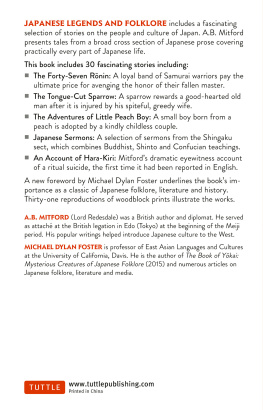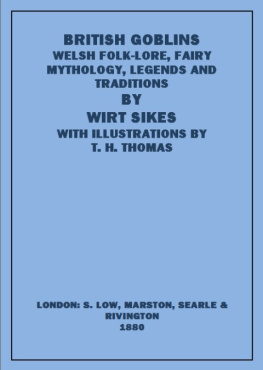ORIGIN OF THE BELIEF IN FAIRIES.
According to a well-known law of our nature, effects suggest causes; and another law, perhaps equally general, impels us to ascribe to the actual and efficient cause the attribute of intelligence. The mind of the deepest philosopher is thus acted upon equally with that of the peasant or the savage; the only difference lies in the nature of the intelligent cause at which they respectively stop. The one pursues the chain of cause and effect, and traces out its various links till he arrives at the great intelligent cause of all, however he may designate him; the other, when unusual phenomena excite his attention, ascribes their production to the immediate agency of some of the inferior beings recognised by his legendary creed.
The action of this latter principle must forcibly strike the minds of those who disdain not to bestow a portion of their attention on the popular legends and traditions of different countries. Every extraordinary appearance is found to have its extraordinary cause assigned; a cause always connected with the history or religion, ancient or modern, of the country, and not unfrequently varying with a change of faith.
The noises and eruptions of tna and Stromboli were, in ancient times, ascribed to Typhon or Vulcan, and at this day the popular belief connects them with the infernal regions. The sounds resembling the clanking of chains, hammering of iron, and blowing of bellows, once to be heard in the island of Barrie, were made by the fiends whom Merlin had set to work to frame the wall of brass to surround Caermarthen.
In accordance with these laws, we find in most countries a popular belief in different classes of beings distinct from men, and from the higher orders of divinities. These beings are usually believed to inhabit, in the caverns of earth, or the depths of the waters, a region of their own. They generally excel mankind in power and in knowledge, and like them are subject to the inevitable laws of death, though after a more prolonged period of existence.
How these classes were first called into existence it is not easy to say; but if, as some assert, all the ancient systems of heathen religion were devised by philosophers for the instruction of rude tribes by appeals to their senses, we might suppose that the minds which peopled the skies with their thousands and tens of thousands of divinities gave birth also to the inhabitants of the field and flood, and that the numerous tales of their exploits and adventures are the production of poetic fiction or rude invention. It may
It is not our intention in the following pages to treat of the awful or lovely deities of Olympus, Valhalla, or Mer. Our subject is less aspiring; and we confine ourselves to those beings who are our fellow-inhabitants of earth, whose manners we aim to describe, and whose deeds we propose to record. We write of Fairies , Fays , Elves , aut alio quo nomine gaudent.
ORIGIN OF THE WORD FAIRY.
Like every other word in extensive use, whose derivation is not historically certain, the word Fairy has obtained various and opposite etymons. Meyric Casaubon, and those who like him deduce everything from a classic source, however unlikely, derive Fairy from , a Homeric name of the Centaurs;
But no theory is so plausible, or is supported by such names, as that which deduces the English Fairy from the Persian Peri. It is said that the Paynim foe, whom the warriors of the Cross encountered in Palestine, spoke only Arabic; the alphabet of which language, it is well known, possesses no p, and therefore organically substitutes an f in such foreign words as contain the former letter; consequently Peri became, in the mouth of an Arab, Feri, whence the crusaders and pilgrims, who carried back to Europe the marvellous tales of Asia, introduced into the West the Arabo-Persian word Fairy. It is further added, that the Morgain or Morgana, so celebrated in old romance, is Merjan Peri, equally celebrated all over the East.
All that is wanting to this so very plausible theory is something like proof, and some slight agreement with the ordinary rules of etymology. Had Ferie, or Fairy, originally signified the individual in the French and English, the only languages in which the word occurs, we might feel disposed to acquiesce in it. But they do not: and even if they did, how should we deduce from them the Italian Fata, and the Spanish Fada or Hada, (words which unquestionably stand for the same imaginary being,) unless on the principle by which Menage must have deduced Lutin from Lemurthe first letter being the same in both? As to the fair Merjan Peri (D'Herbelot calls her Merjan Banou), we fancy a little too much importance has been attached to her. Her name, as far as we can learn, only occurs in the Cahermn Nmeh, a Turkish romance, though perhaps translated from the Persian.
The foregoing etymologies, it is to be observed, are all the conjectures of English scholars; for the English is the only language in which the name of the individual, Fairy, has the canine letter to afford any foundation for them.
Leaving, then, these sports of fancy, we will discuss the true origin of the words used in the Romanic languages to express the being which we name Fairy of Romance. These are Fae, Fe, French; Fada, Provenal (whence Hada, Spanish); and Fata, Italian.
The root is evidently, we think, the Latin fatum. In the fourth century of our ra we find this word made plural, and even feminine, and used as the equivalent of Parc. On the reverse of a gold medal of the Emperor Diocletian are three female figures, with the legend Fatis victricibus; a cippus, found at Valencia in Spain, has on one of its sides Fatis Q. Fabius ex voto, and on the other, three female figures, with the attributes of the Mr or Parc.
On the other hand, in a passage presently to be quoted from a celebrated old romance, we shall meet a definition of the word Fe, which expressly asserts that such a being was nothing more than a woman skilled in magic; and such, on examination, we shall find to have been all the Fes of the romances of chivalry and of the popular tales; in effect, that fe is a participle, and the words dame or femme is to be understood.
In the middle ages there was in use a Latin verb, fatare, that it was the practice of the Latin language to elide accented syllables, especially in the past participle of verbs of the first conjugation, and that this practice had been transmitted to the Italian, whence fatato-a would form fato-a, and una donna fatata might thus become una fata. Whether the same was the case in the Provenal we cannot affirm, as our knowledge of that dialect is very slight; but, judging from analogy, we would say it was, for in Spanish




